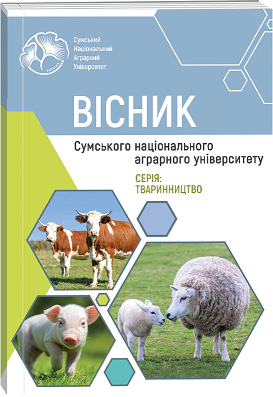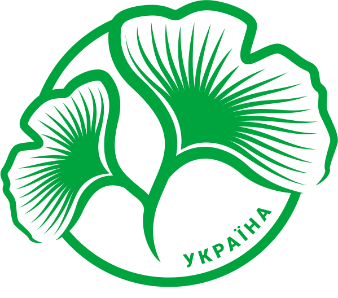Evaluation of efficiency of training methods for training service dogs
Abstract
This article presents research to study the effectiveness of various methods of training service dogs for special purposes. In cynology, the following basic methods are used for dog training: taste-promoting (food), mechanical (physical), contrast and operant (game). The research was conducted on the basis of the State Institution "Zhytomyr Police Training Center". The study involved 16 dogs of the German Shepherd breed, 2 dogs of the Spaniel breed, and 2 Belgian Shepherds (Malinois), a total of 20 heads. Dogs showed excellent results when using contrast and operant training methods. 30-35 days were spent on training dogs for trouble-free performance of skills with the contrast method, and 25-30 days with the operant method. With the food method, the duration of training dogs was an average of 35-45 days. Regarding this method of preparation, we can say that in its pure form it is not effective. Dogs show an undesirable connection to food, unwillingness to carry out commands without "treats". The mechanical method without a combination with food practically did not give positive results. When observing the rate of production of conditioned reflexes, there was a manifestation of fear and subsequent refusal to work. It is not used for special training of dogs of search service. Given the advantages and disadvantages of each method individually selected the most effective for training each animal on a special training course. After undergoing a special training course for the search service, the dog must perform work with the traces left (working "on the trail"), sampling things and samples with the smell, sampling a specific person from the group, search the area, find the smell of bullet casings, ammunition, drugs and explosives, weapons, ammunition, human corpses and their remains; to have developed an active-protective reaction to outsiders and to be able to protect the cynologist and the detention, escort, and further protection of detained criminals. When calculating the effectiveness of such indicators as: the number of dogs; the average live weight of 1 animal; the average number of days spent and additional to develop a skill for each method; the cost of dry food "Club 4 paws" for active dogs; average daily intake of dry food. The results of research have shown that most feed and funds are spent on the use of mechanical and food training methods. The cost of feeding dogs when using the operant method of training is 675-810 UAH. and when using the contrast method of preparation - UAH 891-1080. These studies can be useful and used in the canine work of various services and departments, in the educational process in conducting theoretical and practical classes on dog training in the training of cynologists.
References
2. Vynohrad, O. V., 2011. Osnovy sluzhbovoi kinolohii [Service Cynology Fundamentals]. Khmelnytskyi : Merkiuriti-Podillia.
3. Harmash, V. V., 2019. The place of canine units in the structure of the National Police of Ukraine and in the system of the Ministry of Internal Affairs. Pravo i bezpeka, KhNUVS. Avaible at : http://old.pb.univd.edu.ua/?action=publications&pub_name=pravo_i_bezpeka&mid=8 [Accessed 20 January 2020].
4. Zubko, V. N., 1975. Osnovy sluzhebnogo sobakovodstva [Service Dog Breeding Basics]. Moskva : DOSAAF.
5. Instructions for organizing the activities of canine units of the SES. Avaible at : http : //search.ligazakon.ua/l_doc2.nsf/link1/RE32348.html [Accessed 20 January 2020].
6. Blokhin, G. I. [et al]. 2017. Kinologiya: uchebnoe posobie dlya vuzov [Cynology: a textbook for universities]. Sankt-Peterburg: Lan'.
7. Methods and techniques for training service dogs. All-Ukrainian Cynological Association. Avaible at : Http://u-ka.org.ua/dressirovka-sobak/25-dressirovka-sobak/320-metody-i-priemy-dressirovki-sluzhebnykh-sobak (Accessed 20 January 2020).
8. Mordiushenko, S. M., 2013. Spetsyfika ta psykholohichni osoblyvosti diialnosti kinolohichnoi sluzhby [Specifics and psychological features of the dog service]. Visnyk Natsionalnoho universytetu oborony Ukrainy: zb. nauk. prats, issue 1(32), pp. 245–252.
9. Orlov, A. I., 1978. Metodika dressirovki sluzhebnykh sobak [Service dog training method]. Moskva : DOSAAF.
10. Polishchuk, F. K. and Trofimenko, O. L., 2003. Osnovy kinologii. Teoreticheskiy i prakticheskiy aspekty dressirovki [Cynology basics. Theoretical and practical aspects of training]. Kiev-Irpen' : Perun.
11. Cherkashyn, A. V. and Kovalenko, B. P., 2009. Metody dresyruvannia sobak sluzhbovykh pored [Methods of training dogs of service breeds]. Rozvedennia tvaryn – aktualni problemy ta shliakhy yikh vyrishennia: zb. nauk.-ref. prats. Kharkivska derzhavna zooveterynarna akademiia, issue 3, pp. 64–65.
12. Shutenko, O. O. and Krasokha, Ya. V., 2008. Osnovy sluzhbovoi kinolohii: Navchalnyi posibnyk dlia pidhotovky fakhivtsiv-kinolohiv [Fundamentals of service cynology: A textbook for the training of cynologists]. Kyiv: DP «Drukarnia MVS Ukrainy».
13. Yazykov, V. V., 1932. Teoriya i tekhnika dressirovki sluzhebnykh sobak [Theory and technique of training service dogs]. Moskva : Voenizdat.

 ISSN
ISSN  ISSN
ISSN 


